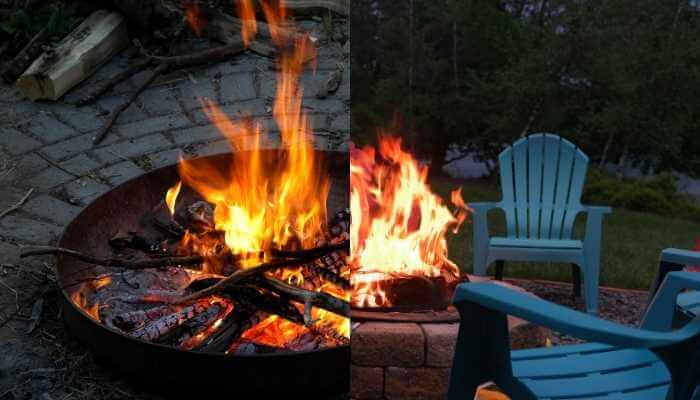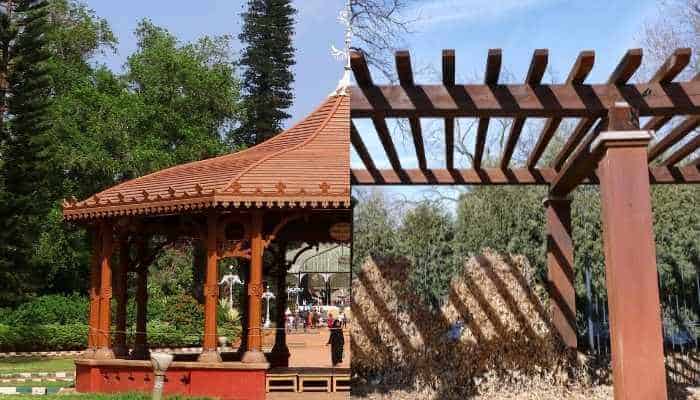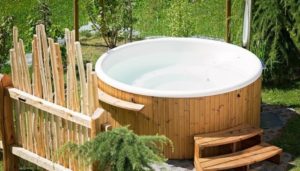Fire pits have become a must-have ever since we began living on our own property and have been able to make and share them. I grew up with bonfires on starlit nights roasting marshmallows and just getting lost in the stories or the crackling of the flames.
In my current home, we inherited a little portable, metal fire pit that just won’t do in the long run. But since I want to build an actual full fire pit, which is better – in-ground or above-ground?
Above-ground fire pits are built to stand above a level, graded ground and are made of non-flammable materials while in-ground fire pits are settled 6 inches to one foot below the ground’s surface either directly in the yard or integrated into a patio. Otherwise, there are only minor differences.
I want to break my decision-making process down a bit more for you, so you can make your own decision on this subject. So, just keep reading!
What Is an Above-Ground Fire Pit?
An above-ground fire pit is generally made of block or brick, or some sort of stone that is then shaped into a cylinder up from the ground. You can also find them made of various types of metal such as stainless steel or wrought iron.
It usually remains relatively low to the ground and is set somewhere in your outdoor living space. The inside is used to either burn wood or a gas heating element is added while it’s being made for an easier method of having your flames readily available.
When I built mine, I just made sure that the ground beneath was level and had nothing beneath it that could cause problems (septic of any kind of utilities). Then, I spread quick-drying concrete in the circle I had designated around it. I stacked blocks in rings, leaving a small opening for drainage and airflow at the bottom.
Once I had it up to 2 feet high, I was done. I capped the top with matching thin stone and used non-flammable Gorilla Glue masonry adhesive. It really didn’t cost much at all (less than $100) and it added a lot of value to the home when we sold it. It was well used by the family as well, which is the more important measure of worth, in my opinion.

What Exactly Is an In-Ground Fire Pit?
In-ground pits often don’t require as much on materials, but you will have to do a lot in increasing the labor. After all, you’ll need to dig a hole. Once you know it’s safe to dig a hole where you want the firepit, you can do that. It reminds me of making a campfire when I was in girl scouts and a hiker – only this is going to be permanent and larger. It can cost as little as nothing but labor and get progressively more expensive depending upon where it’s located and how it’s decorated.
There is usually a hole dug, I’d say at most 1ft (30.5 cm) deep. Then, stones, brick, or whatever you have that is non-flammable decorative material can be placed around the hole and it’d be preferable if this is level. Then, you simply use the hole itself as your pit. These kinds of fire pits are usually for wood only.
In-ground fire pits can be as simple or as complex as you desire. Some people actually have them made as part of their patio and not as a separate space in the yard. Just remember, when you place an in-ground fire pit, it’s going to stay there. The only way to move it is to start over again somewhere else and fill in the current hole. So be careful about your decision.
What Safety Concerns Should You Have Owning a Fire Pit?
Well, it depends on your point of view and also if you have little ones running around near the fire pit. You also need to find out about local regulations concerning the fire pits before you build one and even after it’s built, you need to keep track of whether it’s safe to burn or not. Most towns and counties have a safety line that gives you wind and fire advisory.
If you have an in-ground fire pit, they are easier to fall into and for clumsy toddlers and even rambunctious children, that’s dangerous. However, if you don’t need to be concerned with children, in-ground fire pits are usually smaller and contain the flames or keep them under better control than above-ground fire pits.
You should always place fire pits – no matter which kind – at least 10 feet from other objects like furniture or landscaping, or plants that are in the yard. The heat will kill most plants and of course, there is always the fire hazard.
Which Is Better, In-Ground or Above-Ground Fire Pits?
There is no true answer here. The decision is based on what you want to see in your outdoor living space and how much labor, time, and money you are willing to put into the project. For the homes that I have owned over the years, the choice has been above-ground fire pits. The primary reason for this choice is because I live in an area with hard, red clay that is nearly impossible to dig into without using powered equipment.
In Conclusion
Fire pits are great features to have in both warm and cool weather. That’s what makes it appealing and can last many years. It’s also a relatively easy and cheap DIY project as well. You simply have to decide which type of fire pit is right for you and your family.
Once you know which kind of fire pit you want to make, you need only get the supplies, be ready for the labor, and handle the building of your project. It can literally be built and then enjoyed all in the same weekend.













